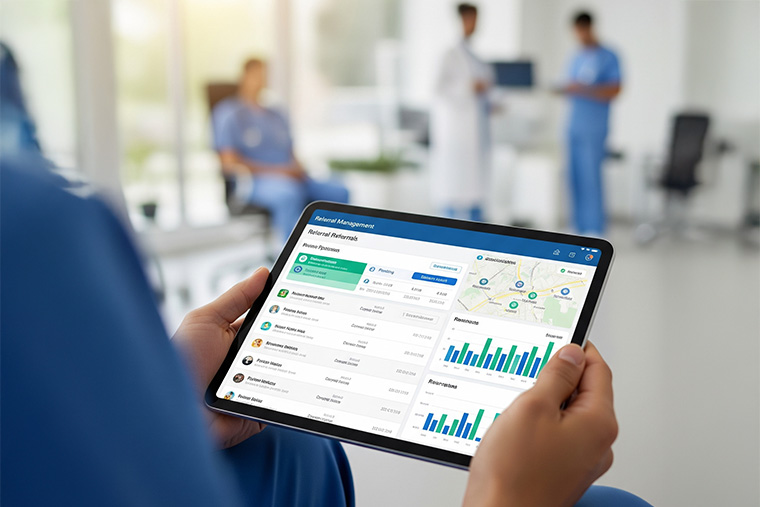Frequently Asked Questions
1. How long does implementation take?
A typical single-site deployment goes live within 10–12 weeks, covering discovery workshops, platform configuration, system integrations, and end-user training. Multi-site or multi-specialty rollouts may extend to 16–20 weeks, but our phased approach ensures each location starts realising value quickly while minimising disruption to clinical services.
2. Does the platform integrate with the NHS e-Referral Service (e-RS)?
Yes. We provide native, fully supported integration with e-RS. Referrals can be received directly from GPs, triaged in our platform, and then updated back into e-RS with status and appointment details—all without manual data entry. This bi-directional connection keeps both primary and secondary care clinicians informed, supports national interoperability goals, and helps you meet RTT and two-week-wait targets.
3. Is patient data stored in the UK?
Absolutely. All data is hosted in ISO 27001-certified UK data centres operated by Microsoft Azure and AWS. We also support deployment in the NHS Shared Tenant for organisations that require it. Data sovereignty and residency are enforced through contractual SLAs, and all backups remain within UK borders.
4. How are urgent or suspected cancer referrals handled?
Urgent and two-week-wait referrals are automatically flagged by our rules engine at the moment of entry. The system assigns an accelerated SLA, routes the referral to the appropriate specialist queue, and triggers automated reminders until an appointment is booked. Dashboards provide live “red-amber-green” indicators so clinical leads can take immediate action if a deadline is at risk.
5. What support is available post-launch?
We offer three levels of managed support—Silver (8×5), Gold (16×5), and Platinum (24×7). All tiers include proactive monitoring, monthly health checks, and access to our UK-based Service Desk. Platinum clients benefit from 30-minute incident response, quarterly optimisation workshops, and a dedicated Customer Success Manager who routinely reviews KPIs such as referral leakage and RTT adherence.
6. Can we customise forms, triage rules, and notifications ourselves?
Yes. Administrative users have access to a no-code configuration studio where they can create or modify referral forms, set clinical triage rules, and design patient communications (SMS, email) without developer assistance. Role-based permissions ensure that only authorised staff can deploy changes, and a version-control mechanism provides full auditability.
7. How does the solution ensure information governance (IG) compliance?
The platform has been assessed against the NHS Data Security & Protection Toolkit, meets DCB 0129/0160 clinical safety standards, and supports GDPR requirements for lawful processing, data minimisation, and subject-access requests. All PHI is encrypted both in transit (TLS 1.2/1.3) and at rest (AES-256), and user actions are logged for a minimum of eight years to align with NHS retention policies.
8. What are the typical ROI metrics?
Clients report an average 38 % reduction in referral cycle time, a 24 % drop in patient no-shows, and administrative cost savings of up to £18 per referral. Most organisations achieve payback within the first 9–12 months, driven by efficiency gains and reduced fines related to RTT breaches.
9. Do you provide on-site training?
Yes. Our blended learning programme includes on-site classroom sessions, role-specific e-learning modules, and live virtual Q&A clinics. Super users receive additional coaching so they can act as first-line support and champions for ongoing adoption.







